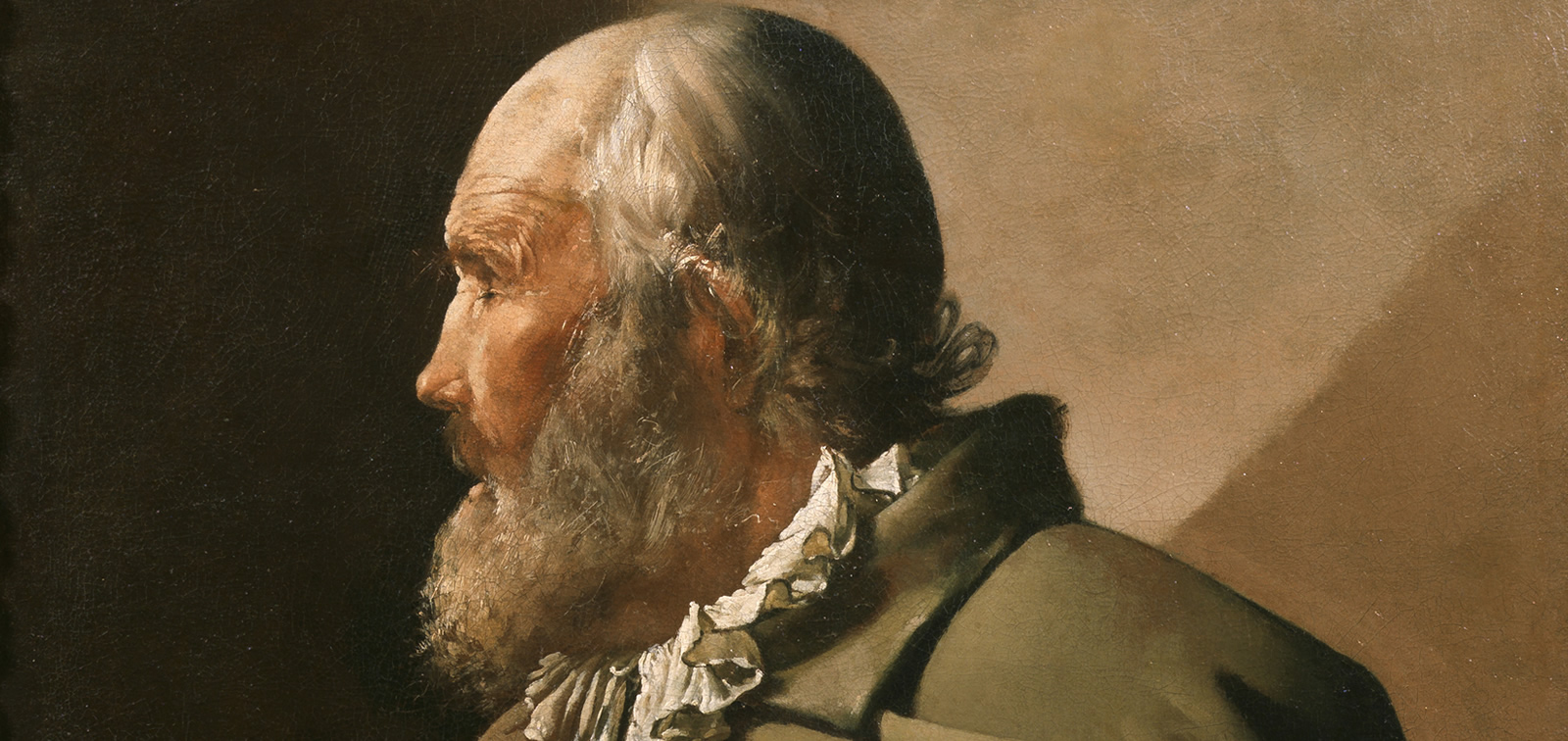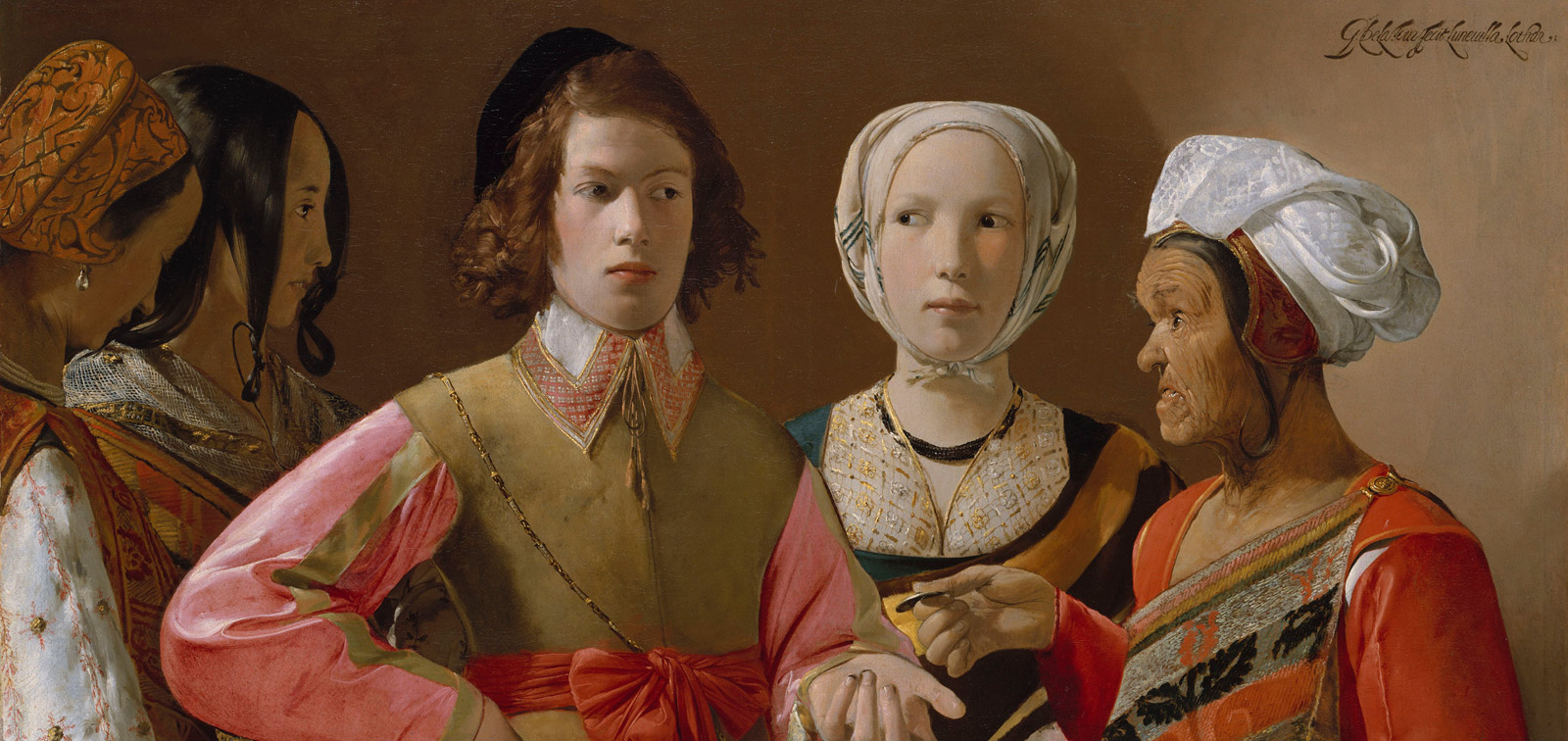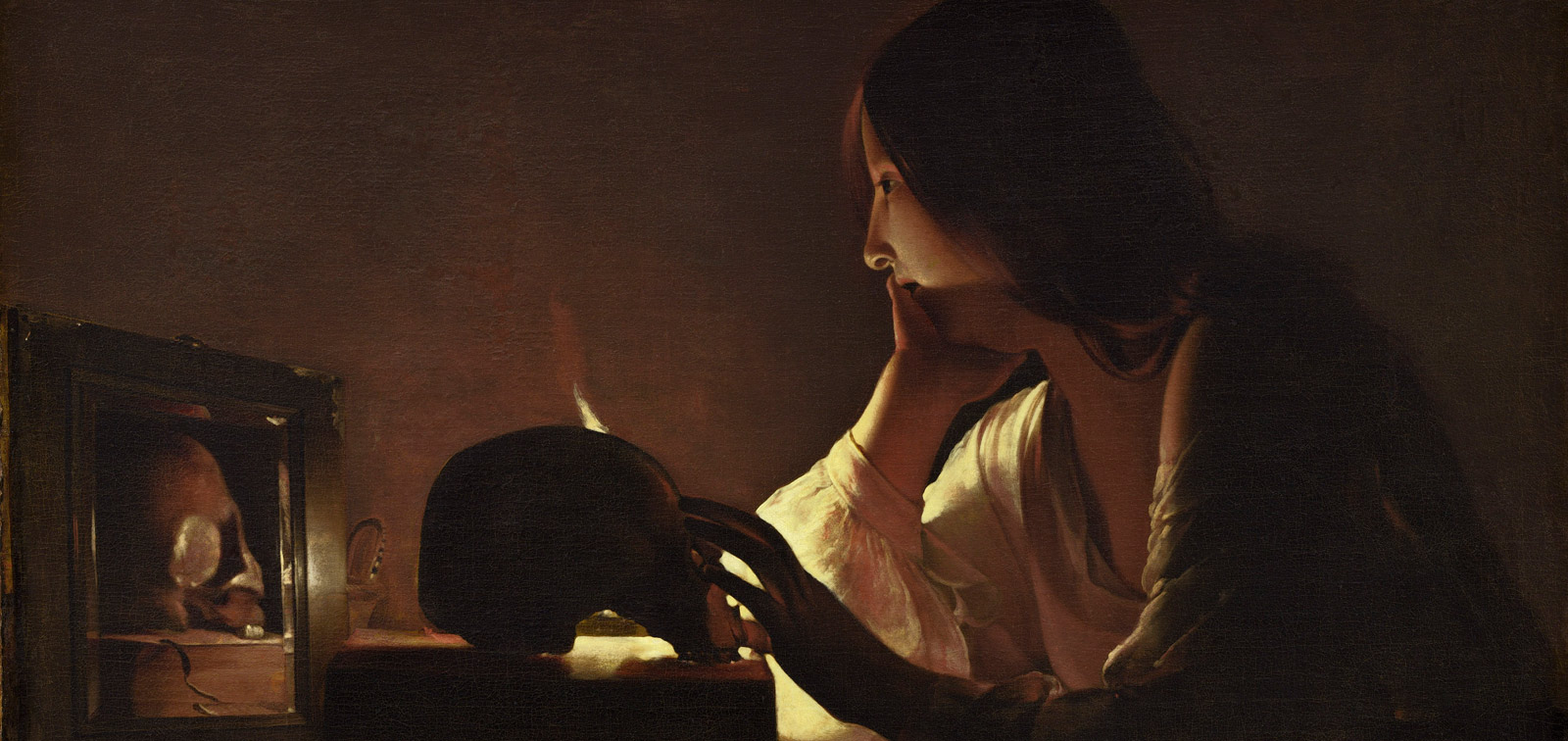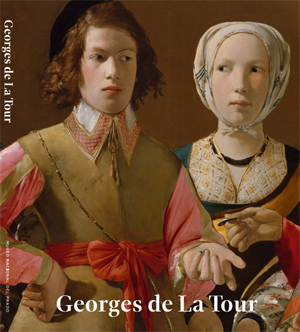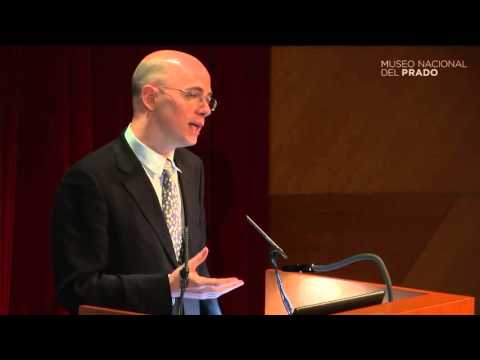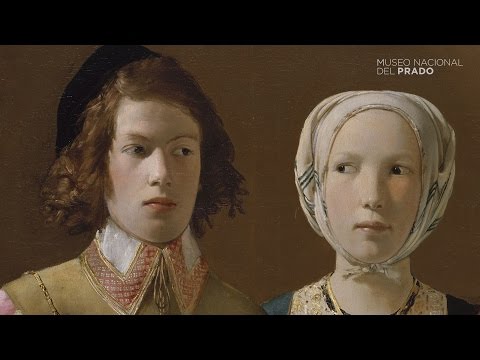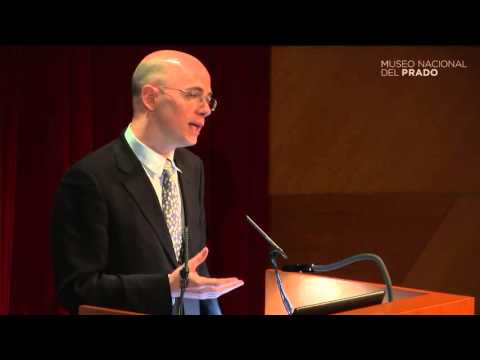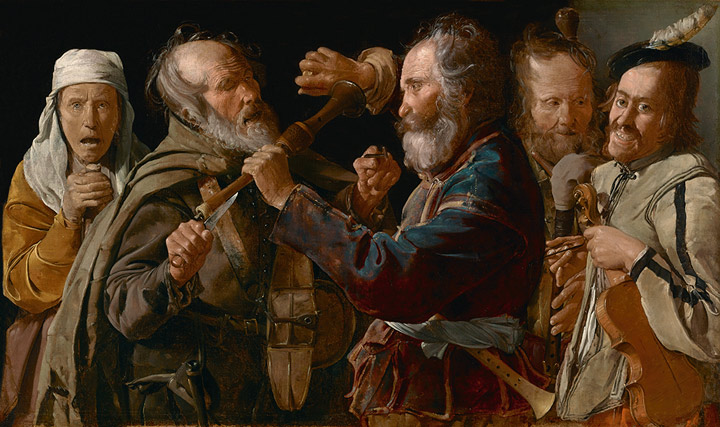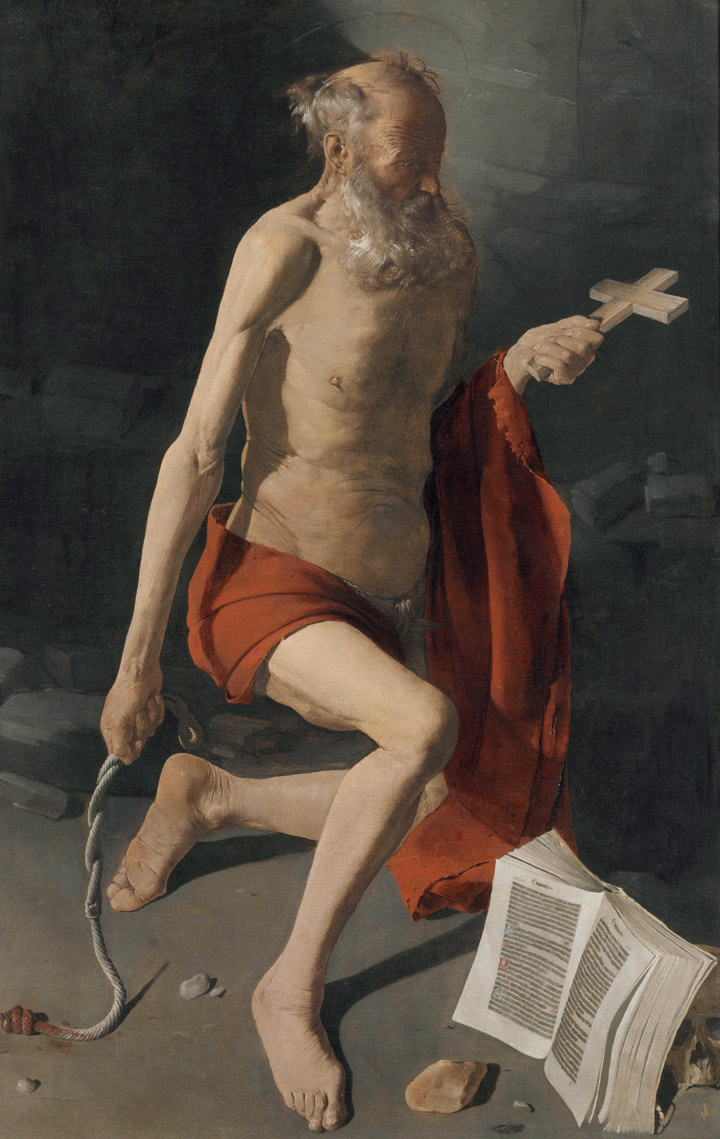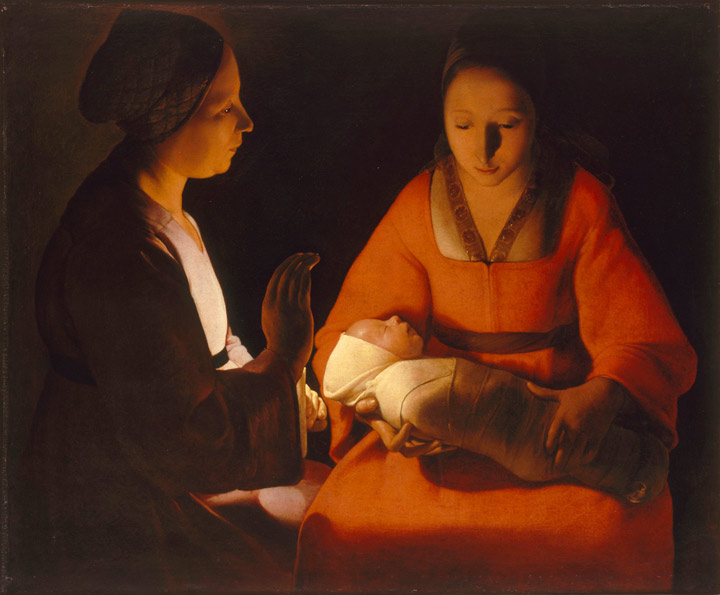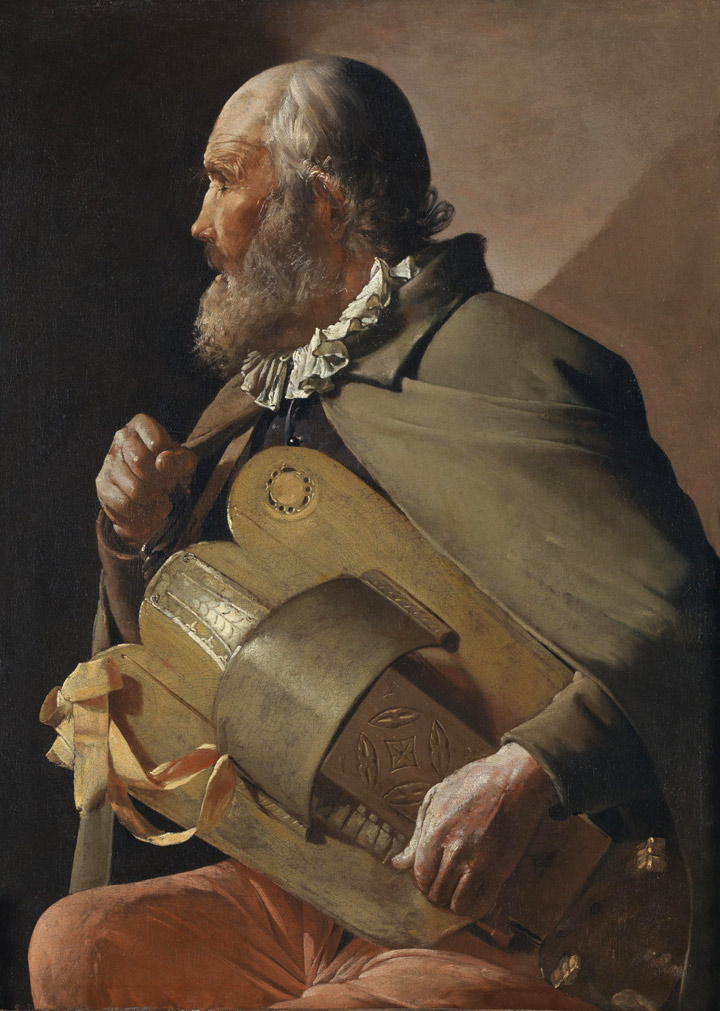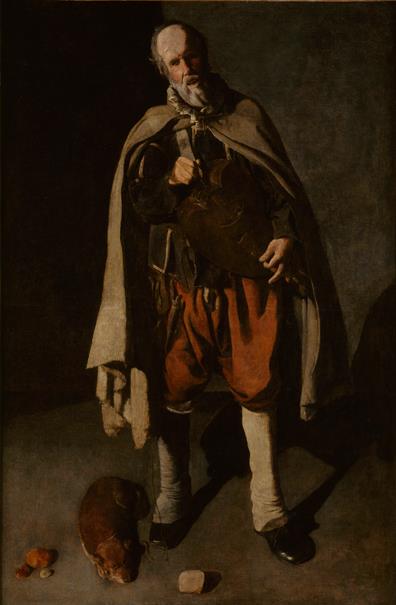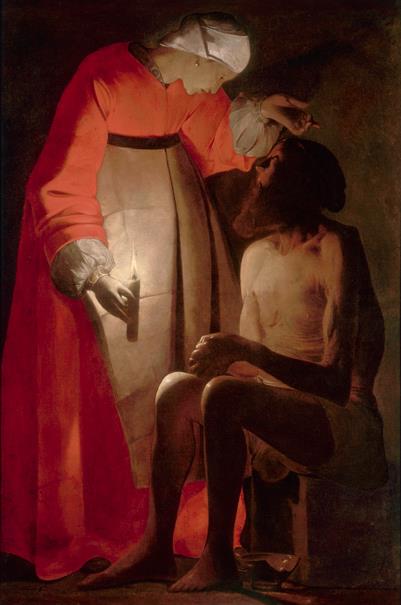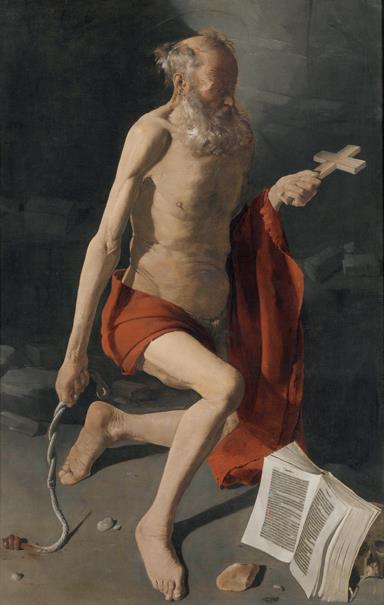Vic-sur-Seille, Lorraine, 1593 – Lunéville, Lorraine, 1652
La Tour was a French painter celebrated in his own day and subsequently completely forgotten until his rediscovery in the 20th century, firstly by Hermann Voss in 1915. From the time of the exhibition Painters of Reality (1934), La Tour regained a leading position within French painting, which was confirmed by the important acquisition in 1960 of The Fortune Teller by the Metropolitan Museum of Art in New York and by two monographic exhibitions on the artist in 1972 and 1997, both in Paris.
La Tour was born in a town in Lorraine to an old and relatively prosperous family of craftsmen and property owners. Little or nothing is known of his youth and training nor of a possible trip to Italy of the type undertaken by many painters at this period in order to complete their artistic training. Whatever the case, in 1616 La Tour was already a fully trained painter. The following year he married Diana Le Nerf, who was from a wealthy family, and in 1618 he moved to Lunéville.
By 1620, La Tour was a resident of the city, leading the life of a prosperous local gentleman. The fame that he soon acquired due to the purchases of his work by the Duke of Lorraine in 1623-1624 was confirmed during the French occupancy of the duchy. La Tour went to Paris in 1639 and was made Painter in Ordinary to the King. Every year he executed a painting for the governor of Lorraine, the maréchal de La Ferté. Other celebrated collectors such as Richelieu, the superintendent of finances Claude de Bullion, the architect Le Nôtre and even Louis XIII possessed works by his hand.
La Tour died in 1652, probably during an outbreak of an epidemic, a few days after his wife.
Facts and figures: more than 40 paintings are more or less unanimously considered to be autograph works, while 28 canvases and prints are copies of lost originals. In other words, there are more than 70 known compositions, of which only 4 are dated and only 18 signed. With La Tour’s works, the composition is pared down to its essential details with no anecdotal elements, architecture or landscape, and even the accessories are reduced to the absolutely necessary: his saints usually lack haloes while his angels have no wings. Only two of La Tour’s paintings have a legible date (Saint Peter repentant, 1645, Cleveland Museum of Art, and The Denial of Saint Peter, 1650, Musée des Beaux-Arts, Nantes), for which reason the chronology of his oeuvre continues to be widely debated.
La Tour painted both daytime and nocturnal scenes, which he approached differently. The former are characterised by their cool, clear light and the sharpness of the brushstroke and precision in the portrayal of the figures, with their wrinkles and rags recorded with the tip of the brush. In the nocturnal scenes, almost always lit by a candle, the limited colour range is often reduced to a dialogue between grey-brown tones and vermillion, while the volumes are pared down to a few simple planes. In La Tour’s final period this economy of means gives rise to the creation of highly meditative works with an illumination that could be described as metaphysical and which increasingly moves the models away from reality. No gesture or movement disturbs the introspection of the figures, turned in on themselves, self-absorbed and reflexive.

